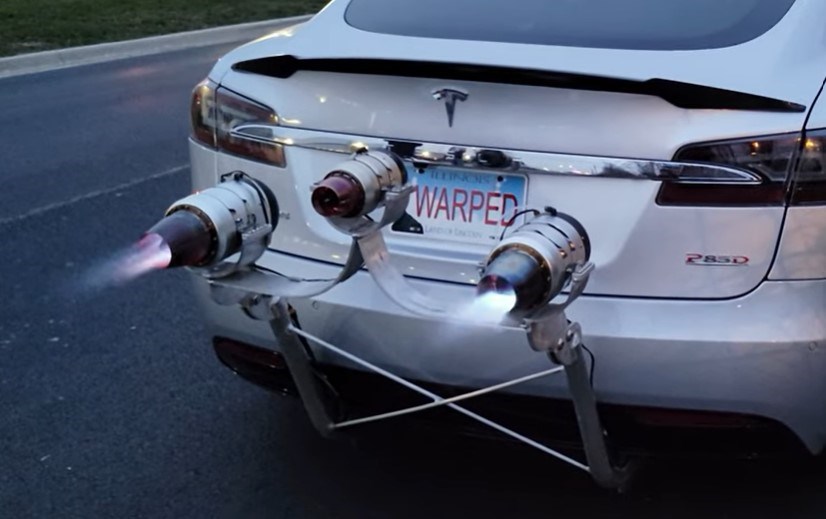The promise of rocket thrusters attached to the back of the next-generation Tesla hypercar dubbed Roadster has to be one of the wildest happenings in the automobile industry. The Roadster hasn’t arrived yet, but Tesla hasn’t changed its mind about offering this array of ten SpaceX-developed booster rockets as an option for the upcoming car to accelerate using rocket power.
The concept of an electric car that obtains extra propulsion, not through greater torque transmitted to the wheels, is exciting, but we have no idea how it will work. There have been racing cars with fans surrounding them, but those were there for aerodynamic reasons, not to provide the extra push.
So, why not strap jet engines to the back of an electric vehicle? Do they provide a considerable performance gain, or are they completely pointless? YouTuber Matt Mikka from Warped Perception addressed that question and built a well-made customized array with three mini jet engines.
He first tested driving the vehicle with just the engines, and with two of them active, his Tesla Model S P85 maintained 60 mph (96 km/h) on the highway. Later, he saw how much of an impact they have on the EV’s straight-line acceleration. Therefore, he made runs on electric power alone and with all three engines at maximum thrust – and his conclusions are amusing but not surprising.
Although various circumstances may have influenced the result, the car was approximately one second faster to sprint to sixty with the engines running. However, they appear to improve acceleration, and shaving one second off the typical sprint time is still rather impressive.
This means we’ll have to wait for Musk to keep his word and compare the numbers.

